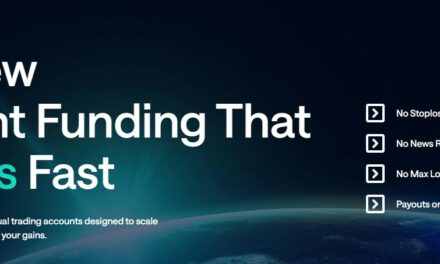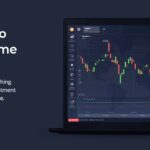Unveiling the True Power Behind Successful Prop Trading
In the high-stakes world of proprietary trading, success isn’t just about winning more trades than you lose. There’s a critical metric that separates the elite from the average—the profit factor. This powerful indicator reveals not just how often you win, but how efficiently your winning trades outperform your losing ones. Today, we’re pulling back the curtain on this closely guarded secret that most trading “gurus” either don’t understand or deliberately keep hidden from aspiring traders.
The profit factor isn’t just another trading statistic; it’s the mathematical expression of one of trading’s fundamental principles: let your winners run and cut your losers short. Furthermore, it’s the single most reliable predictor of your long-term success in prop trading challenges. As you’ll discover, mastering this metric can transform your trading career and dramatically increase your payouts.
What Is Profit Factor? Understanding the Math Behind Trading Success
You’ve probably noticed that losing money hurts more than gaining the same amount feels good—a psychological phenomenon that impacts how successful prop traders think.
A trader’s success is measured using the Profit Factor, which is a simple ratio:
For example, if your trades made a total of $5,700 in profit but only had a total of $2,000 in losses,
Your Profit Factor is:
This means your winners generated 2.85 times more revenue than your losers cost you.
Key takeaway: To be a profitable trader, your Profit Factor must be above 1.0. Successful prop traders aim to increase this number significantly.
The Revelation: What 5,000+ Successful Prop Traders Teach Us
After analyzing data from over 5,000 successful prop traders, we’ve uncovered remarkable insights that could revolutionize your approach to trading. The distribution of profit factors among these traders tells a compelling story about the relationship between this metric and trading success.
Surprisingly, nearly 77% of these traders maintain a profit factor between 1.0 and 1.75. This means if you can achieve a profit factor above 1.75, you’re already performing better than more than three-quarters of prop traders. Even more telling is the payout distribution: traders with profit factors between 1.0 and 1.75 received only 23% of total payouts, while the remaining 23% of traders (those with profit factors above 1.75) claimed an astounding 77% of payouts. This disparity highlights the importance of improving your profit factor in maximizing your trading income.
The Elite 6%: Breaking Into the Top Tier of Prop Traders
The data becomes even more compelling when we examine the upper echelons of profit factor performance. Less than 7% of traders maintain a profit factor between 2.25 and 2.50—effectively making them the elite of the elite in proprietary trading. These exceptional traders don’t just earn marginally more; they dominate the payout structure.
Consider this extraordinary finding: as a trader moves from a profit factor range of 1.25-1.50 (with a 7.88% payout percentage) to the 2.25-2.50 range (with a 34.05% payout percentage), their payouts increase by approximately 5.6 times! This exponential relationship between profit factor and earnings explains why focusing on this metric is so crucial. By doubling your profit factor from around 1.25 to 2.5, you don’t just double your earnings—you multiply them several times over. For traders focused on passing prop challenges and securing funding, this insight is nothing short of revolutionary.
Strategies for Boosting Your Profit Factor in Prop Trading Challenges
Understanding the importance of profit factor is one thing; actually improving it is another. Fortunately, there are proven strategies that can help elevate this crucial metric during your prop trading challenges. The first and most fundamental approach is position sizing based on win probability and risk-reward ratios. Higher conviction trades should receive larger allocations, while speculative positions warrant smaller risk exposure.
Additionally, implementing strategic stop-loss and take-profit levels can dramatically impact your profit factor. Rather than using fixed percentage stops, consider volatility-based stops that adapt to market conditions. For take-profit levels, using multiple targets allows you to scale out of profitable positions, effectively letting your winners run while securing partial profits. Many successful prop traders who consistently achieve higher profit factors also employ trailing stops once trades move significantly in their favor, allowing for potentially unlimited upside while protecting accumulated gains. Remember, passing prop trading challenges isn’t just about avoiding account drawdowns—it’s about demonstrating your ability to generate asymmetric returns where winners substantially outperform losers.
The Psychological Edge: How Higher Profit Factor Changes Trading Mindset
Perhaps the most underappreciated aspect of maintaining a higher profit factor is the profound psychological advantage it provides. When your winning trades consistently outperform your losing ones by a factor of 2 or more, you develop a fundamentally different relationship with risk and uncertainty. Trading becomes less about avoiding losses and more about optimizing gains.
This mindset shift is particularly valuable for traders attempting prop trading challenges, where performance pressure can lead to emotional decision-making. With a focus on profit factor rather than win rate, you’ll find yourself less affected by losing trades, knowing that your system is designed to make significantly more when you’re right than it loses when you’re wrong. This psychological resilience is the hidden benefit of pursuing a higher profit factor strategy. Furthermore, this approach aligns perfectly with the evaluation criteria of most prop firms, which increasingly emphasize quality of returns over frequency of profitable trades when assessing challenge participants.
Beyond the Basics: Advanced Profit Factor Optimization Techniques
For traders who have mastered the fundamentals of profit factor improvement, several advanced techniques can push your performance into the top tier. Market condition filtering is one powerful approach—by identifying environments where your strategy has historically produced the highest profit factor and limiting your exposure during unfavorable conditions, you can dramatically improve your overall performance metrics.
Another sophisticated technique involves trade correlation analysis. Many traders inadvertently take multiple positions that respond to the same market drivers, effectively multiplying their risk exposure without realizing it. By analyzing the correlation between your trades and ensuring diversification of market drivers, you can maintain consistent exposure while reducing the likelihood of correlated losses that damage your profit factor. Top-performing prop traders often develop proprietary scoring systems that evaluate potential trades based on their projected contribution to profit factor rather than simple win probability, giving them a systematic edge in prop trading challenge environments.
The Profit Factor Roadmap: From Challenge Participant to Funded Trader
Developing a higher profit factor doesn’t happen overnight. It requires a deliberate progression through several stages of trading development. For those just beginning their prop trading journey, focus first on achieving consistent profitability with a profit factor above 1.3. This demonstrates basic viability and puts you ahead of many struggling traders.
As you prepare for prop trading challenges, set a target profit factor of 1.75-2.0. This range will position you among the top 25% of candidates and significantly increase your chances of passing evaluations. For established funded traders looking to maximize their income, pushing toward a profit factor of 2.25+ should be the ultimate goal. At this level, you’ll join the elite 6-7% of traders who capture the lion’s share of available payouts. Remember that each step in this progression requires refinement of your trading system, psychological approach, and risk management framework. The journey to developing a higher profit factor for prop trading challenge success is demanding but offers rewards that few other professional endeavors can match.
Conclusion: The Profit Factor Revolution in Your Trading Career
The profit factor represents the most honest assessment of trading skill—it cuts through the noise. It reveals exactly how effectively you’re extracting profits from the market relative to your losses. While most trading educators focus on entry techniques or win rates, the data clearly shows that profit factor is the true determinant of long-term success and income potential in proprietary trading.
By making this metric the centerpiece of your trading development, you’ll align your efforts with the actual mechanics of trading profitability. As you work toward passing prop trading challenges with increasingly higher profit factors, you’ll discover that this approach not only transforms your results but also your entire relationship with the markets. The secret to prop trading success has indeed been hiding in plain sight, obscured not by complexity but by the trading community’s tendency to focus on less impactful metrics. Now that you understand the profound importance of profit factor in your trading journey, the path to joining the elite ranks of highly-paid prop traders is clearer than ever before.











